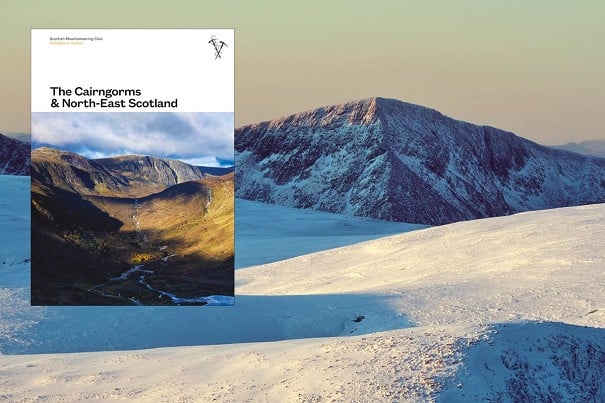
The Cairngorms & North-East Scotland
Packed full of fascinating background information on a diverse part of Scotland, this attractive and inspiring area guide is so much more than just a book of walks, says Dan Bailey.
This ambitious new guide will equally delight low-to-mid-grade weekenders and higher performers who may think they've climbed it all... so our two-part review is written by one of each - Dan Bailey and Andy Moles.
Reviewed by Dan Bailey UKH 
Produced under the Wired label, the Scottish Mountaineering Club's bumper new select guide to the cream of the country's rock climbing brings together a staggering 1760 trad and sport routes, covering the best crags in almost every area from the far southwest to the northern isles.
This massive book has been many years in the making - and it shows
A lot has changed since the previous Scottish rock guide came out in 2005, in terms of new routes climbed, new venues coming into vogue, and of course leaps in the standard of guidebook production. Building on the design achievements of other recent books from the Scottish Mountaineering Press, and using the clear, modern layouts of other Wired guides, 2022's Scottish Rock Climbs is not only the most up-to-date guidebook to climbing north of the border, it's also far and away the best-looking and most user-friendly yet made.
"The compilation and production of the new Scottish Rock Climbs has been a real team effort" says Rob Lovell of Scottish Mountaineering Press, who has been instrumental in totally revamping the club's output.
The photography and presentation really are a cut above any previous Scottish guide
"There have been contributions from a huge number of people from all across Scotland whether that be provision of text, checking routes, marking up diagrams or simply sending in action photos, all of which makes the guidebook what it is. The core team of Kevin Howett, Don Sargeant and Susan Jensen have been working tirelessly over months and years to bring this project, originally imagined by Andy Nisbet, to a conclusion. Andy's death left a massive hole in the Scottish climbing and guidebook community, and we are pleased to have finally completed the project."
"A great many of Andy's photos have been used in the book and it feels fitting that one of his, which captures the essence of Scottish mountaineering trad, made it onto the front cover."
As you'd expect from a best-of selection, routes from Moderate to E11 are covered, and the team have done a good job of including climbs and venues for everyone, from classic mountaineering days (a few scrambles have even sneaked under the wire) to the fiercest testpieces. Mountain crags, sea cliffs and outcrops get equal billing, with a smattering of sport and even an incongruous bouldering spot alongside the reams of trad.
The areas detailed here span the country, from Galloway to Shetland. As an ex-Fifer I can't help noting that, other than the essential Dumby, the Central Belt is the one big regional hole in Scottish Rock Climbs. Gary Latter's two-volume Scottish best-of also gave this rock-starved area a swerve, and while the rationale is clearly to portray only the best of the best, the places a climbing tourist might thank you for recommending, I do wonder why relatively minor venues such as Glen Lednock made the cut, or how the pleasant-looking but undeniably obscure Garheugh Point got a look-in, while three star classics at the likes of Cambusbarron or Limekilns might as well not exist. Quality shines wherever you find it, and even if the routes to write home about in the Central Belt are like rare jewels among choss and broken glass, they're also close to where the majority of Scottish climbers actually live and operate.
Elsewhere, Creag Ghlas seems a regrettable omission. I'm sure there are others, but realistically even in a book of over 600 pages you can't include everything, and debating what's in and what's out is part of the fun of a selective guide.
Presentation is fantastic, with clear colour topos illustrating almost every listed route, useful and attractive mapping, a few simple symbols for at-a-glance info, and a wealth of action photos. The photography really is a cut above any previous Scottish guide, capturing the essential character of the routes and the beauty and diversity of the Highland and coastal backdrops that help make Scottish climbing the best anywhere [bias alert]. By and large the venues are portrayed to full advantage, and speaking as a very average climber it's great to see routes of all grades getting equal weight, Diffs looking every bit as good as Extremes. While recognising that a guidebook producer can only work with what they've got, my one qualm with the photography is the number of helmet-free climbers on show.
In due course the contents of Scottish Rock Climbs will be available in the Rockfax app, but meanwhile the book in itself is an object to covet. It really isn't an either-or: I'd always prefer to have both. Seeing it all on the page collected into a single volume is of course a different experience from accessing the same info at the crag via a phone, and while there's no chance I'll be lugging this breeze-block of a book anywhere, it is great for browsing from area to area at home, and for the general level of psyche that this helps to build.
I may live and almost exclusively climb in Scotland, but while perusing this guide just in the last few days I've already discovered loads of must-see venues I'd not heard of, and a host of unfamiliar but truly fantastic-looking routes even in my low-to-mid grade range - not to mention plenty to aspire to with a bit of work or a more able partner. It's also giving me a prompt to reconsider all sorts of places I'd half forgotten. For a visiting climber from elsewhere in the UK or overseas, Scottish Rock Climbs would be an invaluable source of inspiration; if for instance you were on a road trip taking in the best of the best, this would be all the guidebook you'd conceivably need.
The average climber has a lifetime's worth of fun to get through here. But what about those operating above that midrange level? While I can't personally comment, I know someone who can. Andy Moles, who's familiar with a lot more steep and scary Scottish rock than me, takes up the baton:
Reviewed by Andy Moles 
The first thing you'll notice when you pick up this guidebook, or the postie drops it on your doorstep before driving their forklift off in relief, is that it's enormous, weighing in at well over a kilo. You won't be putting it in your pocket, and you'll think twice about carrying it to any crags with a long approach (it is said there are a few of these in Scotland). It's over 50% heavier than each of Gary Latter's Scottish Rock guidebooks, which are themselves quite bulky.
Save some space, the latest offering from Wired Guides is a feast
Instant conclusion: I will not be carrying this book to the Shelterstone or Beinn Eighe. I will be taking photos of the relevant pages (which is what I tend to do for multi-pitch climbs anyway), or possibly ripping descriptions out of older, now redundant guidebooks (I know it's wrong, but it feels so right).
The other thing you'll immediately notice is, of course, the cover. Peaking out from behind Wired's distinctive graphic splash is an image that captures many of the best things about Scottish climbing – a wall of beautiful, rippled sandstone set against a backdrop of golden bogs, wiggly lochs and islands. The route is Expecting to Fly on Stac Pollaidh, a strong image, and it sets the tone for the visual banquet that awaits inside.
this guidebook is an absolute pleasure. I keep opening at random pages just to look at it
To offset its unwieldy bulk, this guidebook really needs to succeed as a browsing experience and a source of inspiration. If you're not going to be carrying it to the crag, it had better deliver the goods at home. It passes with flying colours. The action shots are superb, often capturing the character of the rock as well as the beauty of the surroundings and the impressiveness of the situation. Crag shots are bright and clear, in notable contrast to the main failing of Gary Latter's guides, in which some of the mountain crag topos are so dark and indistinct they are almost pointless. Capturing all these in good light is quite a feat, and the guidebook team deserve a lot of credit for the standard of quality.
It is notable that good use is made of the luxurious page dimensions to ensure that route descriptions are, with only a few exceptions, on the same page as their topo. Occasionally at single-pitch crags a sensible decision has been made to omit descriptions in order to accommodate more routes. The Wired colour coding for areas works well for locating things quickly (especially valuable in such a large volume), with one slight quirk of having Nevis and Skye back-to-back in similar shades.

Essential information such as crag location, aspect and approach time is succinct and easily found. Maps are smartly simple with optimally minimal contour shading that draws a clear picture of crag locations. One thing not present that often features in modern guidebooks is a crag table in the opening pages – the authors have opted instead for lists of suggestions according to character (Family Cragging, Big Walls, Esoterica etc), which is an interesting approach, but some of the categories don't really add value (there are only four Sea Stacks, many Great Ridges are absent as they aren't the focus of the book, and the Raw Adventure category is nothing more than a salute to the Bishop's Isles). I would personally have preferred the modularity of essential information on a crag table, but less Scotland-savvy visitors (at whom the book is aimed more than me) may prefer this as a channel for ideas.
Given the celebratory story of the different rock types told by the photos, on geology the guide is slightly weak. The rock type is usually, though not always, mentioned in the crag introduction, but I would have liked to see it more prominently. The geology section in the introduction could be a tidy remedy to this if it were not full of errors and mischaracterisations: that schist invariably slopes the wrong way (try Creag Dubh), that gneiss is all about tiny holds, and that quartzite requires brutality, to pinpoint a few. It's a breezy attempt to make geology more engaging and less dry, which is absolutely a good call, but the result is not well executed and could do with a rewrite for the second edition.
Moving into the selection of crags and climbs itself, I have no idea how an editorial decision is made about where to cap the number of routes or pages, and there will always be some tough calls about what to include and what to omit. I had heard at some point during production that the islands would not be included, but it's all here, a maximalist extravaganza stretching from Galloway to Shetland, Mingulay to Rosehearty. It's actually slightly giddying having all of this in one book, and not just in a crammed Megabus Jingo Wobbly way, but as a first-class Caledonian tour with complimentary drinks and tasteful lighting.
Inevitably, there will be some disputed border territory. Anyone experienced in Scottish climbing will have their own preferred ins and outs, but by and large I would say the selection is very good – there are no howlers. Galloway climbers might argue that a mere two crags is hardly better than none at all, and I have seen rumblings about too little in the lower grades (which I would dispute as I think the green and blue spots are actually pretty well served). I would personally question the likes of Cuithe Mheadhonaich and Rubha Carrach, crags that have an exclusive grade range and which, despite having been included in other select guides, have never gained popularity. The same might be said to a lesser extent of Spreadeagle and Blade Buttresses in Glen Nevis. Other potential weight-savers might have been Geirum Walls (because who travels to Mingulay for Reiff-size pitches?), Beinn na Seilg (a little esoteric) and Mad Burn Buttress (a little low on the quality-to-accessibility ratio). Perhaps the oddest inclusion in the whole book, however, is Garheugh Point, not because of quality (for which I can't speak) but because with one partial exception it's the only bouldering venue.
Conversely, crags that come to mind as having narrowly missed out might be Covesea (for another option to Logie Head in the usefully dry climate of the Moray Firth), Brin Rock (for another good sport option close to The Camel) and various strong mountain crags like the Bonaid Dhonn. I suspect in the fullness of their recent development some of the Caithness crags could merit another double page too. In full awareness of the limitations of what can be fitted into a page spread, I will just for fun also offer a few personal recommendations that might have been squeezed in where topos are already present: Les Voyageurs, Seven Days, Suffering Bastard, The Highlander. I'm sure other longstanding keen-beans could offer a few more.
However, I am indulging. It feels as though the authors have aimed for a selection which balances the best in quality with changes in modern climbers' preferences and coverage of different areas, grades and styles – and mostly got it right.
For all my quibbles, make no mistake: this guidebook is an absolute pleasure. I keep opening at random pages just to look at it. I am coming from the perspective of someone who has climbed at the majority of the venues and is already familiar with most of the crags, so was not expecting this book to provide a lot that I didn't already have – yet it has still been a palpable energy shot to my enthusiasm, both for newer crags and those receiving modern topo treatment for the first time, as well as for some of the classic venues. As a source of inspiration this might well be a new high point in British guidebooks, and doubtless even more so for climbers less familiar with rock climbing north of the border – a book that flaunts the extent to which when it's good, it's very very good.
guidebook

Packed full of fascinating background information on a diverse part of Scotland, this attractive and inspiring area guide is so much more than just a book of walks, says Dan Bailey.
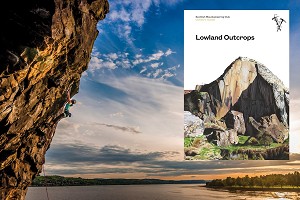
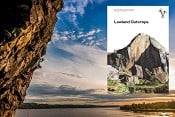
Coming out 18 years after the previous edition, the much-anticipated new definitive guide to the crags of Scotland's Central Belt is an attractive guidebook that brings up-to-date clarity to this well-trodden area.
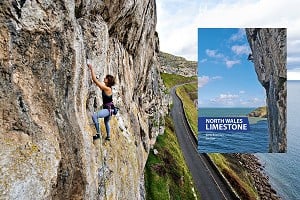
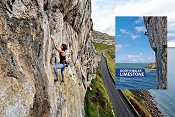
The second edition of North Wales Limestone: The Definitive Guide has just been published. Building on the original book, now nearly 10 years old, it adds hundreds more recent routes, helping to cement the reputation of the area as a major...
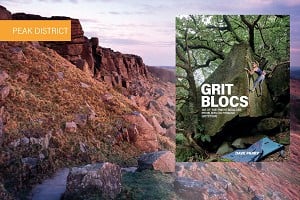
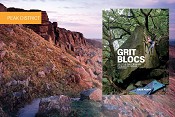
As the long wet winter approaches, psyche is something that it's good to have in abundance. This lavish guide to the best grit bouldering across six...
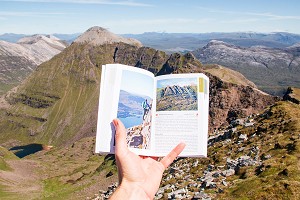
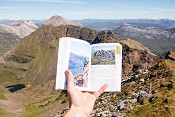
The SMC's new volume covering the wild northwest is the most comprehensive and up-to-date scrambling guidebook yet produced to any...
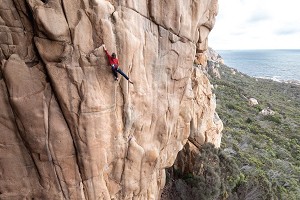
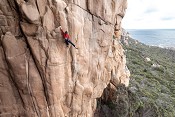
Tasmania has some of the best and most diverse rock climbing in Australia, if not the world, and this...
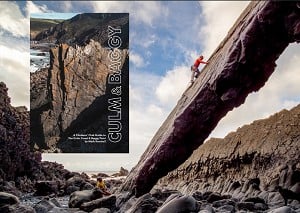
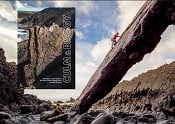
"This was the guidebook I was most looking forward to seeing this year" says Rob Greenwood, "and it excelled my highest...
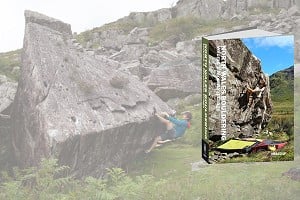
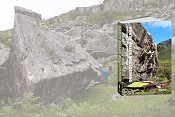
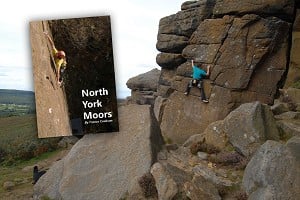
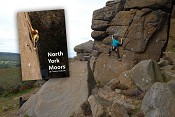
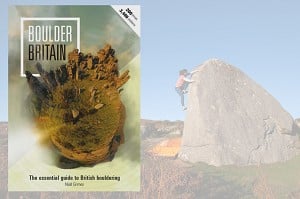
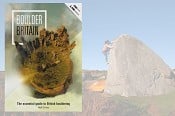

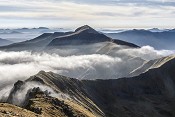

Comments
A great shame none of the central belt crags made it in :( We had a fab few days around Sterling enjoying trad, sport and bouldering from natural crags, to man made holes in the ground. A great area not just for the locals.
Good honest review from both of you. Its a pretty inspiring lump of a book which hasnt left my kitchen table since it arrived as everyone who comes over flicks through it.
I remember going out to beinn na seilg with Andy a few years ago to check routes and for him to take photos. I couldnt understand why it was getting included but his theory at that time was that the guide needed to showcase multiple options in any one area (in that it would be a long drive for most for a days climbing in Ardnamurchan).
I do think that the guidebook team has done a great job with the photos (despite me appearing as "A climber"!) and especially getting so many photos of females climbing.
The furniture shop?
Dumbarton Rock is in and its the only central belt crag I'm aware of as being a 'destination crag'.
I haven't been to all the crags on the book but looking at it I can't see anything I'd choose to drop for another central belt crag. What would you have included?
Personally I'm fine with no Central Belt inclusions (apart from Dumby). There is a new Lowland Outcrops coming soon which will serve the purpose far better - as decent as crags like Cambusbarron and Limekilns are to have locally, they are not as Dave says 'destination' crags that you would travel for, unlike the majority of what is included.
You might argue that the coverage of some other areas, like Shetland and Galloway, is minimal enough that most people travelling there would want the local guide for those too, but at least this act as a showcase for them - the Central Belt crags hardly need that, as their location guarantees popularity.
In terms of what is included, I'm psyched to see some of the NE sea-cliffs given the photo topo treatment for the first time (having been left out of Gary's guides), as well as some of the Caithness cliffs and Beinn Laghail.